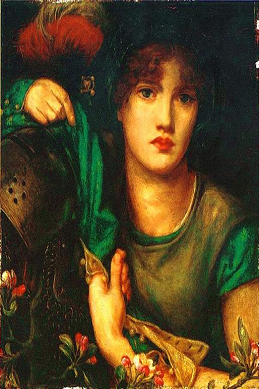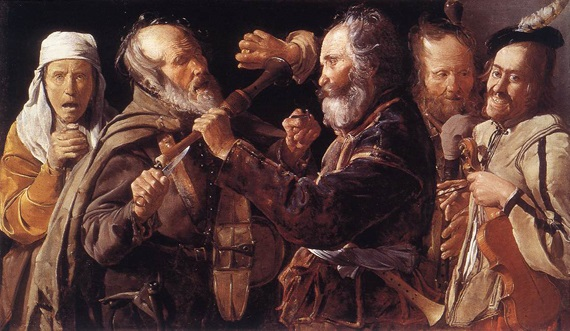These are the beginning lyrics to perhaps the most famous song of the Renaissance, 'Greensleeves.' The lyrics here have been updated to reflect modern grammar and wording, but the sentiment of a love gone wrong remains the same. Although the song has been rumored to have been written by King Henry VIII of England for his second wife, Anne Boleyn, the structure of the song appears to be based on an Italian form, which was not created until after the death of King Henry. Although we may never know who wrote the song, it has lasted for centuries (the tune was even used for the Christmas song 'What Child Is This?').
'My Lady Greensleeves' by
Dante Gabriel Rossetti
Renaissance music is typically thought of as European music that developed during the Renaissance period. Although there is some debate about the exact time period for Renaissance music, it is typically thought of as occurring between about 1430 and 1600. Some scholars have placed the beginning of this musical period to as early as 1300.
The Renaissance period in general was considered a time of rebirth in the arts and culture. Two different interpretations of this period have emerged. One argues that the Renaissance period was a return to the philosophy and art of classical times. Others argue that the Renaissance represents a time of fresh ideas and innovation in the arts and culture. The period is generally thought to have begun in Florence, Italy, before spreading to other parts of Europe. While musical forms changed during this period, music was certainly not the only art affected. Rather, the Renaissance cultural movement influenced literature, politics, science, and philosophy, as well as the fine arts, which includes music.
To help put this time period into context, it may help to remember that the Renaissance was the time period of Leonardo da Vinci, Michelangelo, and Shakespeare. Explorers such as Christopher Columbus and Sir Francis Drake were embarking on long journeys across the ocean in search of new discoveries. Scientists including Galileo and Copernicus were changing what was known about the world. In other words, the Renaissance was a time of exciting discoveries and creative works
The Renaissance also provided a transition between the earlier forms of music and the styles and forms of music that would develop after this period of history ended. Many of the familiar classical composers that are most well-known today were influenced in some way by the changes that occurred during the Renaissance period, both in terms of society's relationship with music and changes in the music itself.

 Alas, my love, you do me wrong,
Alas, my love, you do me wrong,